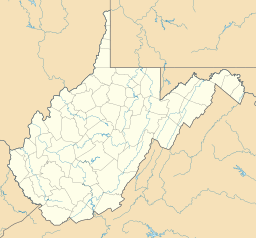Barton Knob facts for kids
Quick facts for kids Barton Knob |
|
|---|---|

View looking south towards Barton Knob
|
|
| Highest point | |
| Elevation | 4,434 ft (1,351 m) |
| Prominence | 574 ft (175 m) |
| Geography | |
| Location | Randolph, West Virginia, United States |
| Parent range | Cheat Mountain |
| Climbing | |
| Access | hike from |
Barton Knob is a mountain peak found on Cheat Mountain. It is located in southeastern Randolph County, West Virginia. This mountain is easy to reach during warmer months. It is also home to one of the last fire towers in the Monongahela National Forest.
The Historic Fire Tower
One of the most interesting things about Barton Knob is its fire tower. This tower has stood on top of the mountain since at least 1939. Fire towers were used to spot forest fires from high up. This helped firefighters get to fires quickly.
The tower was still standing in 2016. However, it is no longer used and is not safe to climb. In 2010, the U.S. Forest Service planned to remove it. They wanted to build a radio repeater nearby. The radio repeater was put in place by 2012. The old fire tower was kept and still stands next to it.
Mining History of the Area
The land around Barton Knob has an interesting past. Before it became part of the Monongahela National Forest in 1986, it was strip mined. Strip mining is a way to dig up minerals close to the surface. It changes the land a lot.
Today, you can explore this history on the Strip Mine Trail (Trail #350). This trail goes through much of the area that was mined. You can see how the land was changed on the south side of Barton Knob. The trail continues east along Cheat Mountain.
Bringing the Forest Back
In late 2010, the Forest Service started a special project. They named a 90-acre section of Barton Knob the Barton Bench Ecological Restoration Site. After the strip mining, non-native grasses were planted there. This was done to stop the soil from washing away.
However, these grasses also prevented native plants from growing back. Now, the Forest Service is trying different ways to help nature return. They want to bring back native trees like red spruce and other hardwood trees. This project helps the forest heal and grow strong again.



